Raiding the Closet of the Witch Next Door
Sabrina the Teenage Witch taught me how to dress AND how to hex. Thanks, girl!
The air is crisp, darkness is approaching, and the goblin in my head has awoken from his summer slumber. Each year when autumn rolls around, that little guy starts pulling all the files he has on knit turtlenecks, mini skirts with platform boots, and the wardrobe department from the ‘90s television series Sabrina the Teenage Witch.
I’ve never experienced more closet envy than watching Sabrina flick through her outfit options with a wave of a finger. Like the East coast Cher Horowitz, Sabrina doesn’t have simply a digital catalog of outfits — she has a supernatural one.
When a friend texted me this the other day — unprompted and unaware I was writing about it — there was an added sense of urgency to an already pressing topic: Sabrina the Teenage Witch is the ultimate fall style icon.
I hesitate to use absolutes (especially when talking about fashion as my opinions are constantly evolving) but I feel pretty confident here in saying ultimate. It’s that good. So good you may even describe it as magic.
Sabrina Spellman, style icon through the ages
Sabrina’s style in all media iterations is heavily referential to ‘60s fashion, which is no coincidence considering her character of Sabrina the Teenage Witch arrived on the scene (via broomstick) in 1962 as a sassy sidekick in the Archie’s Madhouse1 comic series. And with a Bob Card that severe, it was only destiny she’d become a fashion icon.

Mainstays of her wardrobe — mini skirts, shift-style silhouettes, knee-high leather boots, pedal pushers, mod leather jackets — were popularized in the ‘60s, mainstreamed in the ‘70s when her own spin-off comic series was being printed, and experienced major revivals in the ‘90s.
In her eponymous solo comic, first published in 1971, she rocks a lot of bell bottoms, dagger collars, pilgrim shoes, chunky belts, and always the signature headband. Many of these trends were revivals of previous decades too, of course. Fashion is cyclical!
But the Sabrina Spellman most of us know, love, and grew up with was brought to life by Melissa Joan Hart in 1996. While maintaining the same integrity of comic book Sabrina’s classic ‘60s and ‘70s style, sitcom Sabrina sat firmly in the time period in which she debuted.
Her style took a more casual approach — fitting for the star of a teen sitcom. ‘90s Sabrina gravitated toward light wash denim, layering under tops and tanks, button-ups in iridescent and sheer materials, short-sleeve turtlenecks, playful hairstyles with natural highlights, mini skirts over tights, and, obviously, plenty of chokers.
This Sabrina had the New England winter intellectual chic on lock, and yet she didn’t look out of place in platform flip-flops and a crop top when Britney Spears made a cameo. Costume designer Dianne Kennedy2 was even nominated for an Emmy for her work perfecting the ‘90s Sabrina look.
Real Sabrina-heads will know that the 2018 Netflix adaptation, The Chilling Adventures of Sabrina (a much darker take on our classic), intentionally remains time-period-ambiguous. Technology is rather limited and the costume and set design pulls primarily from the ‘50s, ‘60s, and ‘70s, yet it makes an occasional modern reference that leaves us wondering whether or not these little witches are on TikTok.
The most obvious styling difference between these three adaptations is that Netflix kept Sabrina’s platinum bob from the comics, while the ‘90s show opted for a natural looking blonde more often styled below the shoulders. This works well for each medium: The ‘90s show was intended for kids to watch after school who could see themselves in Sabrina as she navigated various challenges in high school and at home. She’s a teen with a secret in a sitcom — all she wants is to fit in.
The Netflix show, however, aimed more for entertainment than relatability. The Chilling Adventures of Sabrina is a much more theatrical and dramatic series that benefits from more severe styling of characters. It’s an iconic scene in the show when Sabrina’s bob magically turns from blonde to platinum, signifying leaving her human side behind and fully embracing her supernatural one.
Whimsigoth and the aesthetic of witches
As a ‘90s-born daughter of a granola mom, there’s nothing more comforting than a hit of that sweet sweet Global Village Coffeehouse aesthetic. Colorful art deco, unnecessarily curly fonts, and R.E.M. playing softly in the background.
Upstairs from the GVC cafe lives a woman in a bell sleeve top whose cat you can always see peering out of the window, illuminated by strings of warm fairy lights, and her name is Whimsigoth.
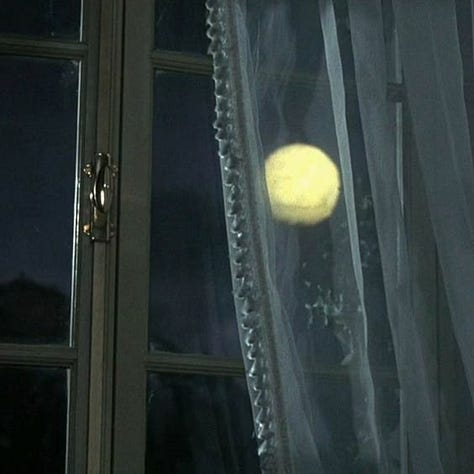
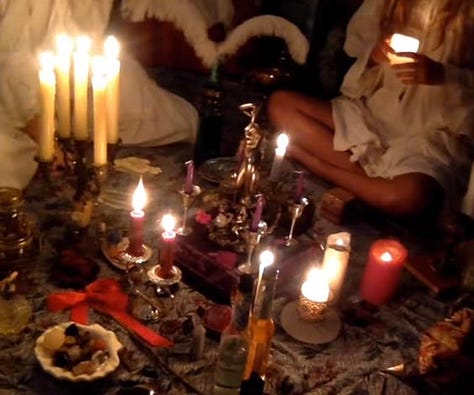
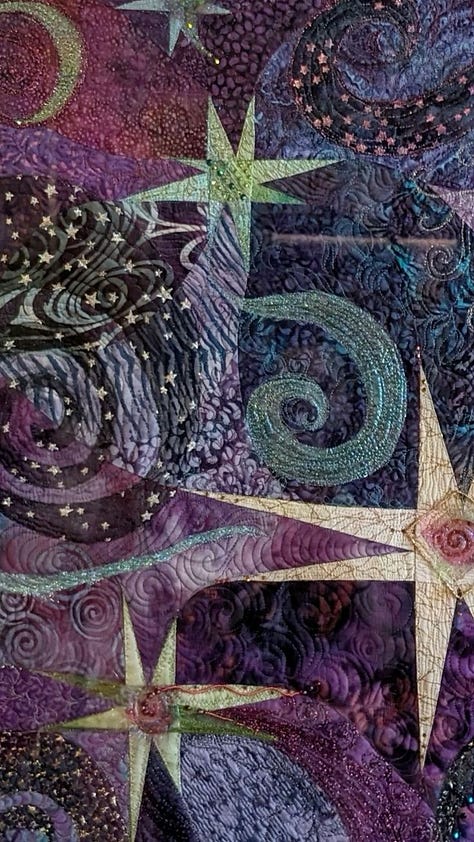
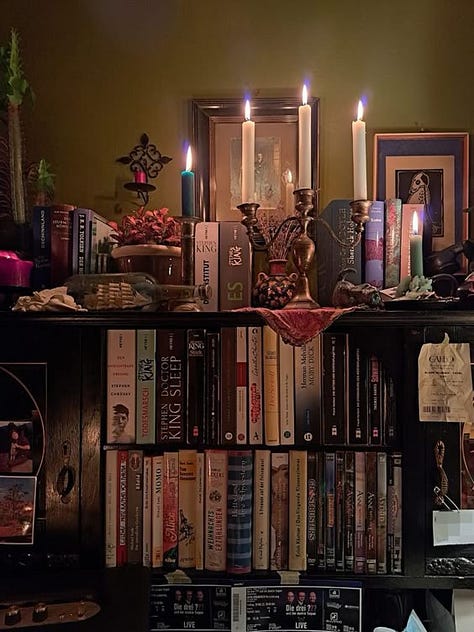
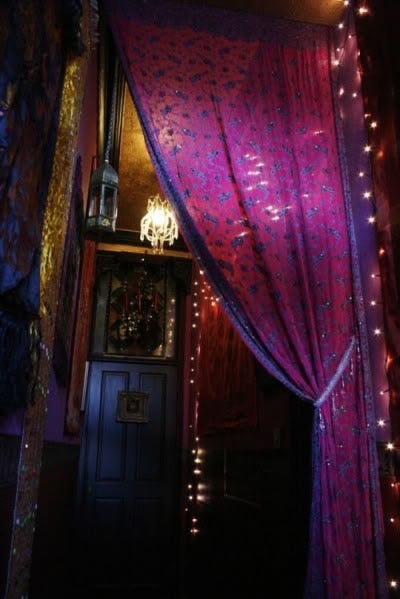
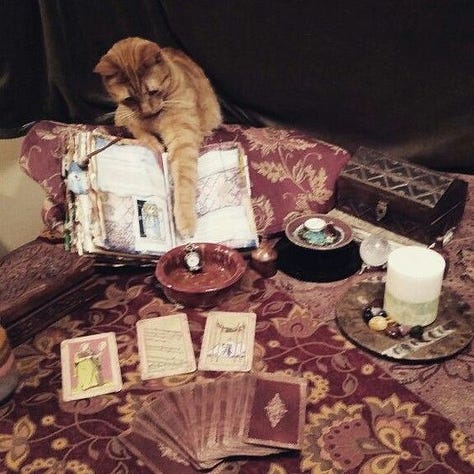
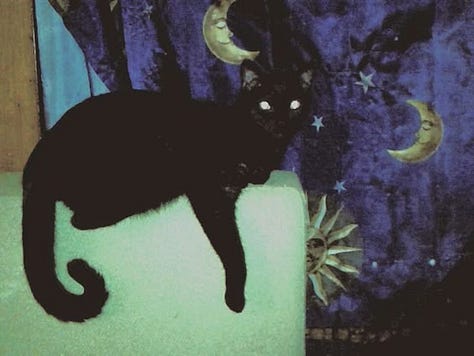
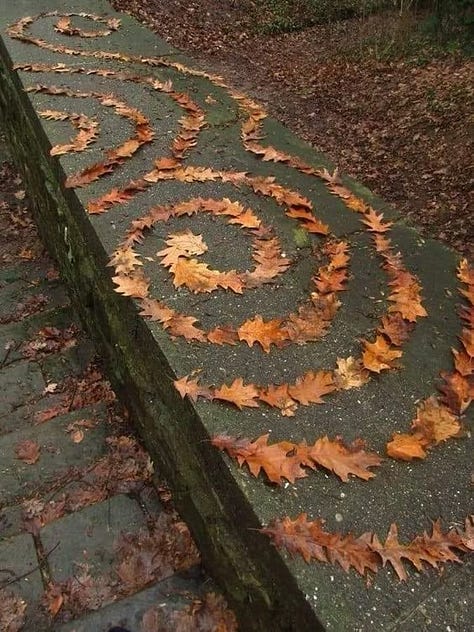

Think of velvety fabrics in deep jewel tones; calligraphy writing on aged paper, golden ink glistening in the moonlight; plum and maroon curtains hanging in every corner; tarot cards strewn on a dark wooden table stained by a steady rotation of forgotten cups of tea; reading by candlelight, watching wax drip down the sides of wine bottles and brass candelabra that litter the living room; a stained glass window through which you can hear the frigid drum of a rainstorm.
Whimsigoth (and sometimes the closely related Whimsicraft that I could write another thousand words on) is the umbrella under which all your favorite ‘90s film and TV costume and set design lives. Charmed, Buffy the Vampire Slayer, Practical Magic, The Craft, Halloweentown, and, obviously, my personal favorite, Sabrina the Teenage Witch are the blueprints for this mystical aesthetic.
As cutesy a name as “Whimsigoth” is, the deep history behind this style is one of persecution. There’s a reason Sabrina and fellow witchy stars are concentrated in the Northeastern United States (Sabrina herself being a Massachusetts-native with a cat named Salem) — witch hunting.
The accusation and punishment of “witches” was a practice in Europe for hundreds of years before crossing the pond. American colonial settlers conducted witch hunts in the 17th and 18th centuries, and it’s believed between 40,000-60,000 “witches” were executed during the several hundred year period of persecution in Europe and the Americas.
The concept of a “witch” as we know it today in popular culture is an amalgamation of historical stereotypes targeted toward unwed women, widows and widowers, those who were mentally ill, those of lower social class, those who rejected Puritan values, and others who didn’t fit the specific mold of the time period. The witch archetype was an easy scapegoat for fearful religiously-fueled and undereducated townspeople.
There’s an element of resistance inherent in the idea of being a witch — ostracized from society, often living among mostly other women, self-sufficient and rarely with a man by her side — that speaks to the desires of young women more and more so with each generation.
I always felt a connection to witchy characters growing up. The rebellious nature called more to me than the princess in the castle or the maiden in a quaint town. I dreamed more of a cat familiar and draping myself in velvety fabrics than twirling in a ball gown and leaving a glass slipper behind.
Take me to the mall in 1996
When I interrogate my penchant for Whimsigoth and love affair with a teenage witch, it’s clear my specific soft spot for costume design in the ‘90s is wound tightly in childhood nostalgia. Buffy the Vampire Slayer is one of my mom’s favorite shows and Charmed plays in the background of many early memories. But I also find there’s also a pressing and saddening longing for a time in fashion when we weren’t addicted to online shopping.
Our obsession with finding the “perfect basics” is neverending in a world where every item of clothing is at our fingertips at any given moment. Gone are the days of going to the mall to make a selection from a few available stores, in are the days of spending 10 hours researching the best plain white t-shirt on the market and ordering several options just to make sure.
What if this white t-shirt is the wrong shade of white? What if it’s too see-through? What if it’s slightly too long? Or too short? Which one did that girl on TikTok say was worth it? I shouldn’t know about all these options.
I have so many thrifted and stolen-from-my-mom’s-closet ‘90s pieces that just feel so good to wear. (An issue I have with so much of what’s on the market at the moment.) You can seldom find a white fisherman’s sweater on Depop that doesn’t have “Rory Gilmore vibes” in the caption. The people want ‘90s TV clothes!
What I yearn for when I flip through ‘90s J. Crew catalogs and dream of the Practical Magic sisters’ closets is a confidence in knowing the clothes are made well. What I actually need when I search for a Gilmore Girls-esque cable knit sweater is to be shopping at a mall in the ‘90s. And what I really want when I’m tirelessly hunting for the perfect vintage Sabrina-inspired mini skirt is to be raiding the closet of the witch next door.
If we’re talking about Whimsigoth, I can’t not bring up the interior of Taylor Swift’s Nashville apartment. There’s draped fabric ballooning above the dining table, antique mismatched chairs, and the room is lit by starburst lanterns and a candle chandelier. The place has an unmistakable castle vibe, as if a witch escaped her fate in the dungeon by poisoning the king and keeping the place to herself.
The kitchen is a wild mix of primary colors, hand painted whimsical murals, magnet collages, wallpapered archways, and handwriting directly on cabinets. She’s even wearing a velvet top here — an undercover Whimsigoth! The apartment can only be seen in the backgrounds of interviews and a few clips from her Netflix documentary, but I’d love to know if she was rewatching Sabrina while decorating.
What are your favorite Whimsigoth references? Favorite ‘90s costume design? Favorite version of Sabrina? I’d love to hear your thoughts!
Huge thank you to readallcomics.com for the HD scans of Sabrina and any other comic you could imagine. I’ve spent way too long parsing through these for outfit inspo.
She also worked on Beverly Hills, 90210 — talk about ‘90s costume legend.








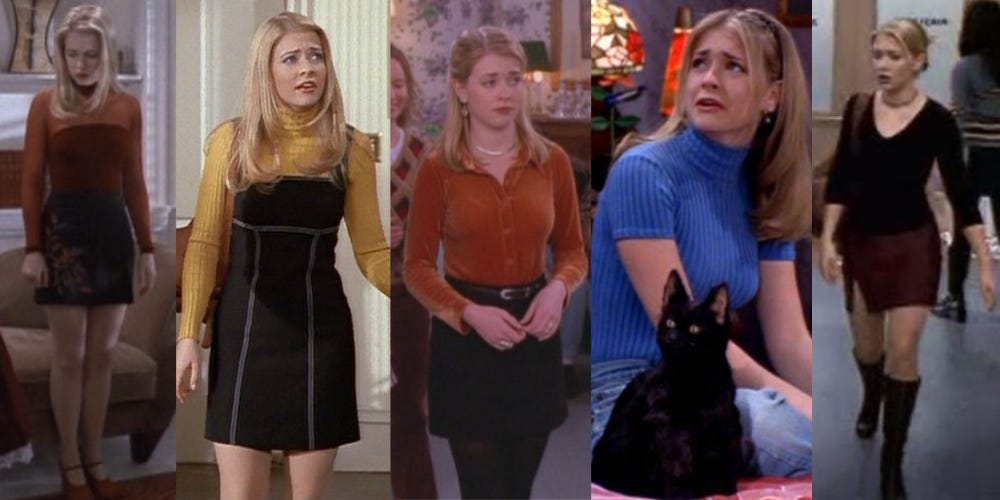

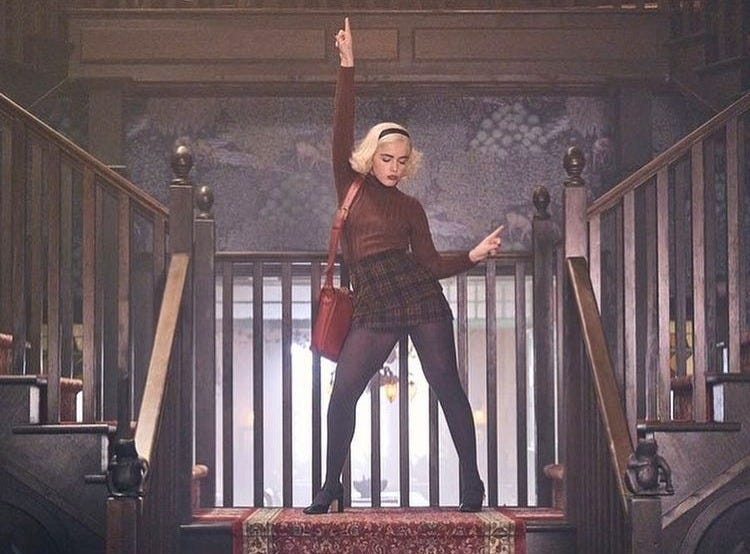









Every fall I say to myself - this will be the year I find the mid-length burgundy, leather trench that Sabrina wore in the opening credits during the college years.
YET ANOTHER SPELLBINDING PIECE FROM YOU!!!